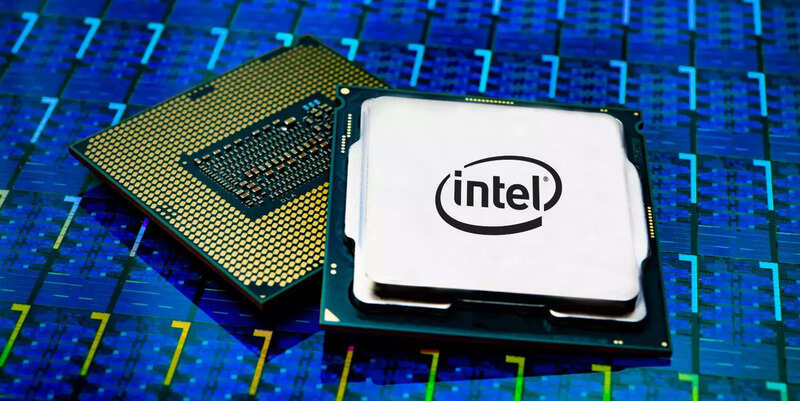Intel’s $20 billion factory in Ohio could become the world’s largest chip factory
Intel Corp said on Friday it would invest up to $100 billion to build potentially the world’s largest chipmaking complex in Ohio, seeking to boost capacity as a global shortage of semiconductors affects everything from smartphones to cars.
The move is part of the CEO Pat GelsingerIntel’s strategy to restore Intel’s dominance in chip manufacturing and reduce America’s reliance on Asian manufacturing hubs, which have a strong hold on the market.
An initial $20 billion investment — the largest in Ohio history — on a 1,000-acre site in New Albany will create 3,000 jobs, Gelsinger said. It could reach $100 billion with eight manufacturing plants in total and would be the biggest investment ever in Ohio, he told Reuters.
Dubbed the heart of silicon, it could become “the largest semiconductor manufacturing site on the planet”, he said.
As chipmakers scramble to ramp up production, Intel’s plans for new factories won’t solve the current supply shortage, as such complexes take years to build.
Gelsinger reiterated on Friday that he expects the chip shortage to persist through 2023.
To dramatically increase chip production in the United States, the Biden administration aims to persuade Congress to approve $52 billion in subsidies.
U.S. House of Representatives Speaker Nancy Pelosi said Friday that the House of Representatives will soon introduce a competitiveness bill to help bolster investments in semiconductors and supply chains. This would include the $52 billion funding https://www.Reuters.com/world/us/pelosi-says-us-house-will-soon-introduce-competitiveness-bill-2022-01-21.
The American President Joe Biden touted Intel’s investment Friday at a White House event with Gelsinger and again argued for congressional action.
“China is doing everything it can to take over the global market so they can try to compete with us,” Biden said.
US Secretary of Commerce Gina Raimondo said at the event that today’s semiconductor supply chain is “far too dependent on conditions and countries on the other side of the world.”
Gelsinger said that without government funding “we’re still going to start the Ohio site. It just won’t happen as fast and it won’t grow as quickly.”
FESTIVE FRIES AND FAMINE
Intel ceded the position of No. 1 semiconductor supplier to Samsung Electronics Co Ltd in 2021, rising to second place with growth of just 0.5%, the lowest rate in the top 25, according to Gartner data. .
As part of its turnaround plan to become a major chipmaker for outside customers, Intel opened two factories in Arizona in September. The $20 billion factories will bring the total number of Intel factories on its campus in the Phoenix suburb of Chandler to six.
Gelsinger told Reuters he still hoped to announce another major manufacturing site in Europe in the coming months.
It’s not just Intel that is increasing its investments. Rivals Samsung Electronics and Taiwan Semiconductor Manufacturing Co or TSMC have also announced big investment plans in the United States. And that raises questions about a glut of chips in the future.
“We still have years ahead of us before we even have some semblance of a balance between supply and demand,” Gelsinger said. “Ask yourself what part of your life isn’t getting more digital.”
“Yes, the industry is growing, and maybe the metaverse is solving the global hunger for the semiconductor industry. But there’s a big bubble coming,” said Gartner analyst Alan Priestley.
US-CHINA TECHNOLOGY WAR
The rise of the United States comes as a technology war between the United States and China causes a decoupling of certain technologies, such as chips. Companies looking to sell technology to China are considering locating outside the United States to avoid being trapped by US export control rules. China is also investing heavily in its semiconductor manufacturing capacity.
While Gelsinger also touted the safety and economic benefits of increasing U.S. chip production on Friday, Bloomberg reported in November that the Biden administration had pushed back on an earlier plan by the company to increase chip production. silicon wafers in China for national security reasons.
Intel has drawn fire for its decision to remove references to Xinjiang from an annual letter to suppliers after the chipmaker faced backlash in China for asking suppliers to avoid the sanctions-hit region.
Asked about it during a briefing last month, White House press secretary Jen Psaki said she couldn’t comment specifically on the company, but said “American companies shouldn’t never feel the need to apologize for defending basic human rights or opposing repression”. reiterating a call for industry to ensure it does not source products involving forced labor from Xinjiang and urging companies to oppose ‘China’s arming of its markets to stifle support to human rights”.
Intel’s investment in Ohio should attract partners and suppliers. Air Products, Applied Materials, LAM Research and Ultra Clean Technology have expressed interest in establishing a presence in the region, Intel said.
The construction of the first two factories should begin at the end of 2022 and production in 2025.
FacebookTwitterLinkedIn


Comments are closed.